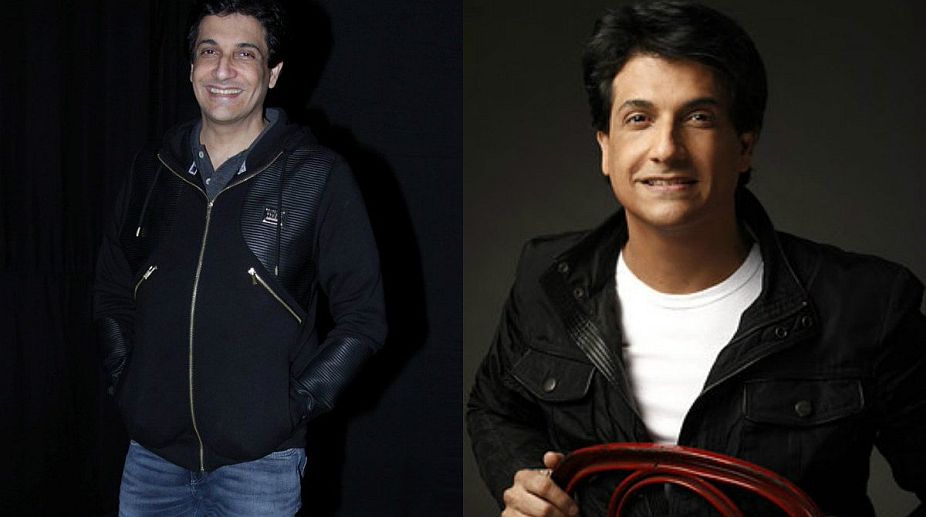Remembering Rukmini Devi
Thanks to Kathak exponent Ashimbandhu Bhattacharya and his team consisting of Avik Chaki and Subroto Pandit, rasikas got a glimpse of their excellent Kathak rendition.

Shiamak Davar (PHOTO: TWITTER)
‘You live as long as you dance,” said Soviet ballet dancer and choreographer, Rudolf Nureyev. Today, the world celebrates International Dance Day to revel in the universality of this art form, to cross all political, cultural and ethnic barriers and bring people together with a common language. Ace dancer and choreographer, Shiamak Davar known as the guru of contemporary dance in India has theShiamakDance Movement — the largest in the world. His unique “Shiamak Style” is constantly introducing new moves and forms, while his institution, Shaimak Davar’s Institute of Performing Arts is churning out extraordinarily talented dancers. It has reached out to over a million enthusiasts across India, Canada, Australia, UK, and UAE. Excerpts:
Q What is it about dance that inspires you?
From the time I started out, I’ve realised that dance is therapeutic. It has the power to heal. I’ve had people of all ages who come to learn and in process see and complete transformation in their personality. They learn to let go of their fears and inhibitions, gain confidence and learn to work as a team. Seeing these success stories keeps me inspired and motivated.
Advertisement
Dance is also a beautiful visual medium to make music come to life. Every new song inspires me, it tells a story and this is what I interpret through movement and choreography. Good music inspires me to choreograph. My dance company is the physical interpretation of my vision.
In terms of ideation, everything is an inspiration. From nature to animals, music to different cultures— there is always something to observe, grasp and translate into motion. As a performing artist, it is your self-driven motivation and the yearning to stay inspired that keeps you driven.
Q Why do you think “The Shiamak Effect” is felt so strongly across the world?
I wanted to make people experience the same joy that I derived from dancing and performing. My motto is “Have Feet. Will Dance.” It reiterates the fact that everyone can dance. I wanted to create a platform for people to come and express themselves through movement, without being judged. The sense of achievement and fulfillment they get by learning and performing on stage is greater than any other feeling. It’s been over 30 years and it’s great to see the impact it has had globally. People like things that are original and new. This has created a dance community globally where they always learn things that are relevant yet original. It is the freedom for everything to learn that has made the maximum impact. I’ve always incorporated our culture in the choreography, so internationally people feel a sense of belonging and reconnect with their culture through the classes.
Q How has choreography in Bollywood changed over the years?
It has definitely become more structured and stylised. Dil Toh Pagal Hai had created a revolution in terms of introducing fit dancers doing synchronised movements. From there on, a trend started and it has moved in a positive direction. But technology also has a huge role to play in it. The advantage of an editor makes it easier for stars to do one movement at a time with multiple cuts. Honestly, I find this very boring, I miss seeing pure dancing. When you look back, Helenji used to dance an entire sequence effortlessly. That is dance — that was natural talent.
Q What does it take to be a good choreographer?
You need to inspire students in terms of knowledge, dance ability, fitness, flexibility, stretch and strength. This is a continuous learning process, so you have constantly keep reinventing and evolving. With the easy access to YouTube, people feel that watching and copying makes them teachers and choreographers. But passing on half-baked knowledge is the worst— you can harm people’s bodies.
Focus on training, find your area of specialisation and create your original style that is uniquely “you”. The longevity of your career will depend on how knowledgeable and relevant you are.There are plenty of avenues today so find your calling and work whole-heartedly towards it.
Q How do you see this art as a profession in India?
Dance is now a viable career option. Over the last three decades I’ve observed a positive and impactful change in people’s attitude towards this profession. The industry has opened up tremendously — arts and culture have become hugely popular and in effect people don’t fear making their passion a profession. The talent in our country is unbelievable. We no longer need to look at the West as there are plenty of opportunities here. Whether it is becoming a dance instructor in schools, teaching hobby classes, teaching families for Sangeets, performing in films and award shows, being a part of professional teams that perform in musicals or even going abroad and taking up dance full time—the prospects are endless. What is the most important is to constantly have that hunger to learn, train and then pass on the knowledge.
Advertisement